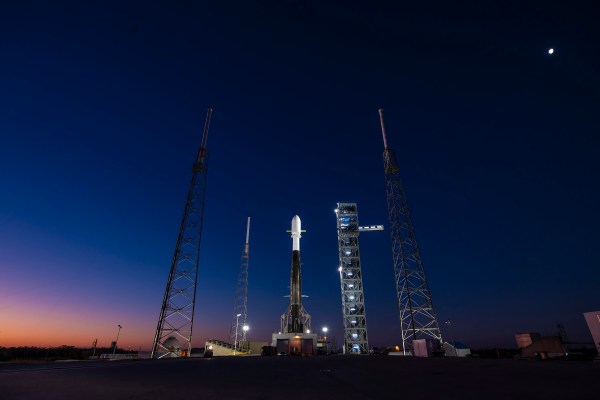ARTICLE AD

SpaceX is teaming up with Northrop Grumman today to deliver more than 8,000 pounds of cargo, fresh food and scientific experiments to astronauts on the International Space Station.
The NG-20 resupply mission will take-off from the Space Force’s Cape Canaveral in Florida on a SpaceX Falcon 9 rocket at around 12:07 PM EST. Northrop’s Cygnus cargo capsule will arrive at the International Space Station on February 1.
Northrop has been launching Cygnus to the ISS for resupply missions using its own Antares rocket since 2013, with the exception of just two missions that used a United Launch Alliance Atlas 5. But Northrop retired that version of Antares last year, and the next version — an all-American launch vehicle called Antares 330, which it is developing with Firefly Aerospace — will not be ready to fly until around mid-2025.
Both Northrop and SpaceX have multi-billion-dollar contracts with NASA to deliver cargo resupply missions to the ISS. Under its contract, SpaceX uses its Dragon capsule; this is the first time it will launch a Cygnus.
That Northrop is using Falcon 9 — and that the change required no modifications to Cynus, per Northrop VP Cyrus Dahlia during a press briefing last week — reflects both companies’ critical importance to American civil space efforts.
SpaceX was able to modify its own hardware to accommodate the spacecraft: William Gerstenmaier, SpaceX’s VP of build and flight reliability, said during the briefing that the company added a 5 feet by 4 feet hatch to the payload fairing to enable a “late load” of cargo. Loading the cargo late in mission preparations, or within 24 hours of launch, allowed crews to add materials (like ice cream) to the spacecraft even after it was encapsulated in the fairing.
Adding the “gigadoor” to the fairing, as Gerstenmaier called it, is especially tricky because the contents inside must remain environmentally controlled.
“That’s a pretty intense activity,” he said. “It’s taken a lot of modifications on our part to get this hardware ready to go fly.”
Cygnus will remain docked to the ISS for around six months. While attached, it may use its thrusters to boost the altitude of the station, which is subject to atmospheric drag — an important capability unique to Cygnus. At the end of its stint, astronauts will fill the spacecraft with trash and other debris, which will burn up in the Earth’s atmosphere.

 1 year ago
50
1 year ago
50 

